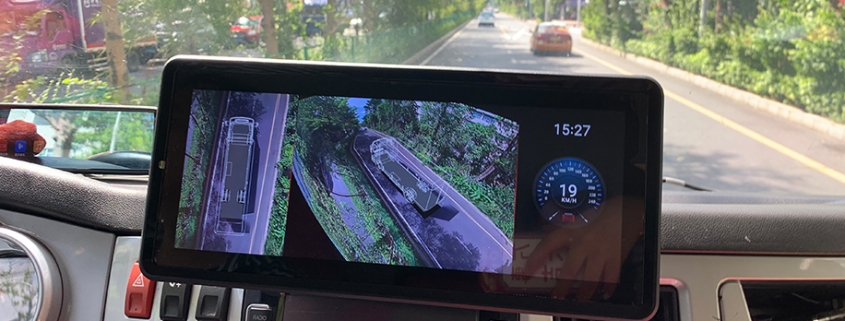With the rapid development of the global economy and the acceleration of urbanisation, the demand for cargo transportation has shown continuous growth. In this context, lorries, as a key tool for logistics and transport, shoulder an important cargo delivery mission. However, when reversing in a busy traffic environment, trucks are prone to traffic accidents and cargo damage due to limited vision and blind zones. In order to improve the safety and efficiency of truck reversing operations, truck reversing cameras have emerged as one of the indispensable technical equipment in the field of commercial transport.
The core function of reversing camera is to extend the driver’s field of vision and provide a clearer operating environment by installing a camera device at the back of the lorry and transmitting the real-time image to the driver’s display screen. The technology plays an important role in the following aspects:
Ⅰ.Visual extension and enhancement:
The primary role of a reversing camera for lorries is to extend the driver’s visual field so that he or she can have a clear view of the rear of the vehicle. Conventional mirrors are limited by angle and field of view and cannot provide comprehensive and accurate information. However, reversing cameras enable drivers to get a clear view of their vehicle’s surroundings by transmitting high-definition images in real time. This visual extension helps the driver to better understand the location and distance of obstacles and thus perform reversing operations more accurately.
Ⅱ. Real-time obstacle detection:
Lorry reversing cameras are generally equipped with high-resolution camera sensors that can detect obstacles around the lorry in real time. Some advanced systems can even use image processing technology and distance measurement to calculate the distance between the obstacle and the lorry, providing accurate information. This enables drivers to better judge the distance to obstacles and thus perform reversing operations more safely.
Ⅲ. Real-time distance measurement and guidance:
Modern reversing cameras for lorries are not only able to display the rear view, but also measure the distance between the vehicle and the obstacle through distance sensing technology. Some systems even show virtual track lines on the display, indicating when the driver needs to turn the steering wheel and when to stop. This real-time distance measurement and guidance function helps drivers to more accurately master the rhythm and position of reversing.
Ⅳ. Enhance driver safety:
Reversing operations usually require a high degree of concentration and precision. The introduction of the reversing camera for trucks enables drivers to perform reversing operations with greater confidence, reducing the sense of tension and anxiety during the operation. This contributes to the driver’s emotional stability and relaxation, further enhancing the safety of the operation.
Ⅴ. Improvement of operation efficiency:
Traditional reversing operations require multiple trial and errors and adjustments, which are time-consuming and labour-intensive. The reversing camera for lorries can significantly improve the efficiency of the operation and reduce the time required for the operation. Drivers can find the right reversing angle and position more quickly, thus saving time and energy and improving transport efficiency.
Ⅵ. Reducing accident risks and costs:
Traffic accidents not only cause damage to lorries and other traffic participants, but also cause related legal and insurance problems, which increase the cost of business. The use of reversing cameras for lorries helps to reduce the risk of accidents and avoid collisions with obstacles, which reduces damage to goods and repair costs, and reduces financial pressure on businesses.
Ⅶ. Data recording and analysis to optimise transport processes:
Reversing camera systems are often equipped with data logging and storage functions that record images and data from each reversing operation. This data not only helps in the subsequent analysis and investigation of accidents, but can also be used to optimise transport processes. By analysing reversing data, transport companies can identify common problems and bottlenecks in their operations, develop more effective training programmes and operating guidelines, and further improve the efficiency and safety of transport.
Ⅷ. Prospects for future development:
As technology continues to advance, lorry reversing cameras are expected to develop more functions and features in the future. It may cover the application of augmented reality technology, which superimposes real-time images with virtual information to guide the driver more intuitively; and it may also cover automated reversing functions, which realise reversing operations without human intervention through technologies such as LIDAR and sensors. These innovations will further increase the role and value of reversing cameras for lorries and bring about an even greater revolution in the transport sector.


